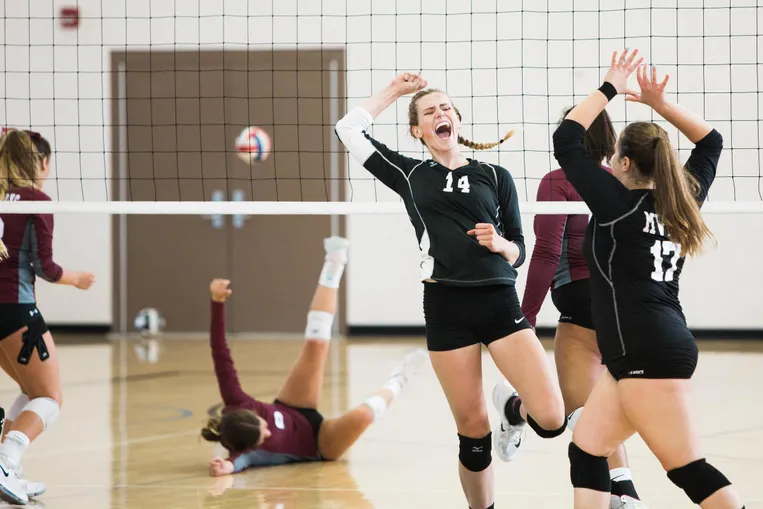
A 2013 Netflix documentary called 'Trophy Kids' gives a jaw-dropping window into the lives of four child athletes and their sports-obsessed parents. It's sometimes difficult to watch as parents push their children, some as young as eight, to endure hours of practice and follow strict eating regimes all in the hopes that they will eventually become sporting superstars. It's a classic case of over-parenting and the belief that early specialization in a particular sport or hobby will lead to long-term achievement and success.
It has long been debated whether early specialization or sampling (allowing children to try an array of hobbies and sports) is more effective in setting kids up for success in any given area. A recent survey of Coachbit students showed that many had long-term goals of becoming professional athletes, mastering musical instruments, or getting into prestigious colleges. Others were ambivalent -- unsure or unfazed by where they were headed in life.
There is certainly nothing wrong with either group of students but recent research suggests that young people should be given the freedom to explore and sample a range of hobbies and interests before specialization, should they even want to specialize that is. At Coachbit we don't aim to raise a generation of super achievers (although we certainly aren't opposed to the idea) but we do believe in encouraging kids to experiment and explore different activities outside of school.
The Paramecium Principle
Angela Duckworth, professor of psychology at the University of Pennsylvania and author of Grit, highly recommends sampling before specializing.
Duckworth explains that "young people thrive when given the freedom to explore a wide array of interests without an obligation to stick with any of them - much like the way a toddler picks up a toy and plays with it for a while, then drops it for another"
She likens the process to a single-celled organism known as a paramecium. The paramecium lives in marine and aquatic environments and is naturally an excellent swimmer. To an untrained eye, it doesn't look like much under a microscope, a long blob covered with hair-like cilia. But most importantly to this conversation, it survives solely through a process of trial and error. If it enters an environment that is not suitable, it backs up and changes course. If the temperature is too warm or cold, or if there isn't enough food, it pivots and adjusts continuously until it finds a more suitable environment. Duckworth calls the Paramecium Principle -- 'If things are getting better, keep swimming in that direction, and if not, change course.'
If the paramecium metaphor doesn't work for you, think of one of those robotic vacuum cleaners (or hoovers) which adapt and change their direction the moment they hit a wall or an obstacle. Much like the swimming blob, it always finds a way to move forward again. When you are young and know very little about what you like and what you don't like, exploration is essential.
I remember my first day in ballet class. The ballet room was being renovated so for a few weeks we had our lessons on the squash court. It turns out I was less interested in the dance steps and more interested in the bright red lines on the floors and walls of the court. It didn't take long before I ditched the tutu and picked up a squash racket. I just happened to be selected for the national squash team by the time I was sixteen. Had I never signed up for ballet classes, I don't know whether I'd ever have discovered my love for squash.
Though I never quite rose to the level of a professional athlete, my story confirms what the latest research suggests. A 2021 paper, published in Perspectives of Psychological Science, entitled 'What Makes a Champion?', shows that some of the best athletes in the world were given the freedom to play and explore multiple sports in their youth.
These athletes chose and committed to their main sport later in life. Their early progress was understandably slow, compared to their competitors who had specialized earlier and had a head start on them. The research shows however that the early multidisciplinary practice was associated with 'greater sustainability of long-term development of excellence.' Those who specialized earlier progressed rapidly in the initial stages, but the long-term sustainability of their development was compromised.
Joel Embiid, a five-time NBA all-star of the Philadelphia 76ers, only played his first game of basketball at the age of sixteen. Before then he was extremely passionate about soccer and volleyball and spent much time considering which sport to pursue as a career. That obviously all changed the moment he picked up a basketball.
Other research suggests that the optimal model for the development of talent is a 'specialized sampling model'. This model is essentially the best of both and allows for sampling within a specified domain. Should your child show a propensity for art, this would allow them to try an array of different art mediums -- painting, pottery, drawing, etc. Should they prefer soccer, the authors of the study would recommend they try out beach soccer, indoor soccer, and field soccer.
The Data Behind 'Trying New Hobbies'
Sampling benefits us when we get older too. Recent studies have followed the career trajectories of top performers -- film directors, artists, and scientists. Results showed that periods of heightened creativity (known as 'hot streaks') are commonly preceded by periods of increased experimentation and sampling. The study was led by Dashun Wang, Professor of Management and Organizations at Northwestern University.
Wang explained that their 'data shows that people ought to explore a bunch of things at work, deliberate about the best fit for their skills, and then exploit what they've learned.' His model, similar to sample and then specialization, suggests 'explore then exploit.' Wang warns that sometimes periods of exploration can feel like dead ends (just like the hoover hitting the wall) but they are essentially periods of hope and growth. 'Today's wanderers are tomorrow's superstars!' writes Derek Tompson of The Atlantic.
Wang and his fellow researchers conclude their report with a broad criticism of America's education system. The current system, they claim, is aimed at pushing early specialization in extracurricular activities which hold the promise of creating 'child prodigies'. This fixation does not allow space for periods of exploration and trial and error, which are incredibly crucial for doing our most creative and innovative work both individually and collectively.
Encouraging Kids to Try New Hobbies
If this is the case, then there is an extra onus on parents to promote an environment of sampling, to allow for walls to be hit and directions to be changed. We've put together a simple guideline to make the process a little smoother.
Tell Them About the Principle
Younger kids love to learn -- especially about weird bugs and blobs -- so they'll likely be intrigued by the paramecium. You can easily find pictures on the internet to make it more interesting and use the opportunity to teach them about the principle.
'Try something new---if you like it, keep going, and if not, change course.'
Engage in a conversation -- ask them if there is anything they would be curious to try or what has stopped them from trying it in the past? It's important that they have a say in the process and get to choose what they explore.
It is also a moment for reflection. We utilize this in our coaching through our five-step reflect habit in which we teach students to Stop, Thanks, Feel, Focus and Tomorrow. More on these steps can be found in (link to five-step article)
Encourage Short-Term Commitments
Trying something new can be daunting so if you're looking to sign your child up for a new extracurricular activity, do so one season at a time. That way if they don't enjoy it they know that it is just for a short period of time. Whether they end up enjoying it or not, there is a lot they can learn about themselves and the world around them during the process.
Angela Duckworth recommends 'the hard thing rule'. That means committing yourself 100% to something new for a specific period of time. This is applicable to both adults and kids alike so why not create an environment of trying new things as a family.
It's important to see the 'hard thing' out to the end of the specified period and not just to give up the moment you get bored or reach an obstacle. Through this, grittiness is developed which helps one commit to long-term goals.
The length of the commitment should vary in accordance with age. Allow younger kids to try out new hobbies for a shorter period (a couple of weeks or months) whereas older kids should commit to a longer period (months to years).
Don't Apply Too Much Pressure
Remember that the goal isn't to 'choose a path' or even 'specialize'. It is within the process of sampling and trying new things that the value lies. That being said, if a child shows a passion or preference for a specific interest, the pursuit of it should most definitely be encouraged.
We are well aware that signing up for multiple extra classes or the equipment required for new sports or hobbies can be a pricey ordeal. This is why we recommend trying one new activity, and committing 100% to it, per season.
In some instances, but not all, sampling can begin at home. Before starting an art or pottery class, why not give it a go at home first?
Final Thoughts
At Coachbit we aren't all about academics. Our curriculum promotes the application of various life skills, such as goal-setting, to multiple aspects of life -- at school, on the sports field, and at home. It is in the process of trying new things, welcoming trials, and learning to navigate them, that grit is fostered and creativity is sparked.
Recommended Resources
Angela Duckworth, _Grit: The Power of Passion and Perserverance _
How many core habits and skills is your child missing?
Take our short quiz and find out.
Take our quiz

_Z2dC98e.webp)
